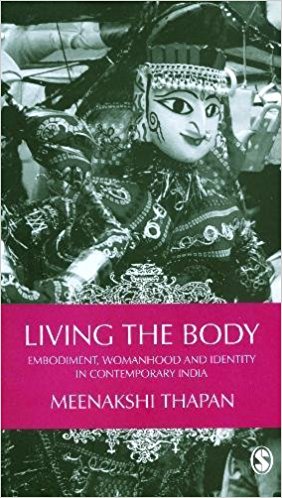This book is a contribution to the sociology of embodiment—mediated by gender and class—in the context of women’s lives in urban India today. The fact that women are located in physical and psychological space as much as they are located in cultural and social domains, and their identity is constituted through an interweaving of all these multiple locations, provides the justification for this book. The conceptual category of embodiment, Thapan argues, provide the medium through which the dualities of subject-object as well as that of structure-practice merge together (p. xv). Questions of identity, resistance and political consciousness are critical to this process of embodiment. In focuses on the lives and experiences of women, and recording their stories, Thapan aims to understand the social from the pers-pective and experience of women—charting in the process the course of sociology for women: I seek to understand women’s embodiment and identity in their everyday lives, and local knowledge(s) and practice(s) as sites of power and resistance.
I suggest that woman speaks with a complexity located in the multiplicities of economic deprivation, caste, familial and gender relations. This multiplicity is importantly located in the physical and social conditions of everyday life that women experience (p. 2).
How do young and adult women articulate this experience in their everyday lives? How may we foreground this subjectivity without reducing it to anecdotal accounts and personal narratives?

